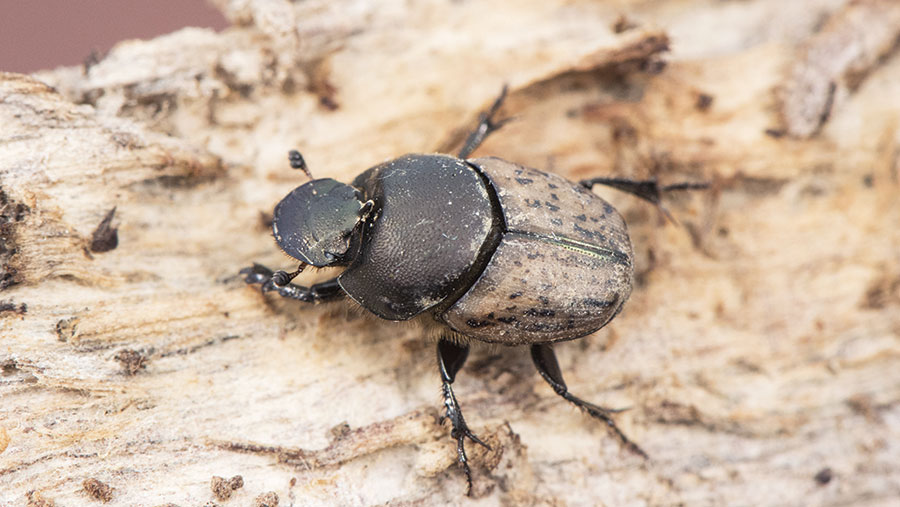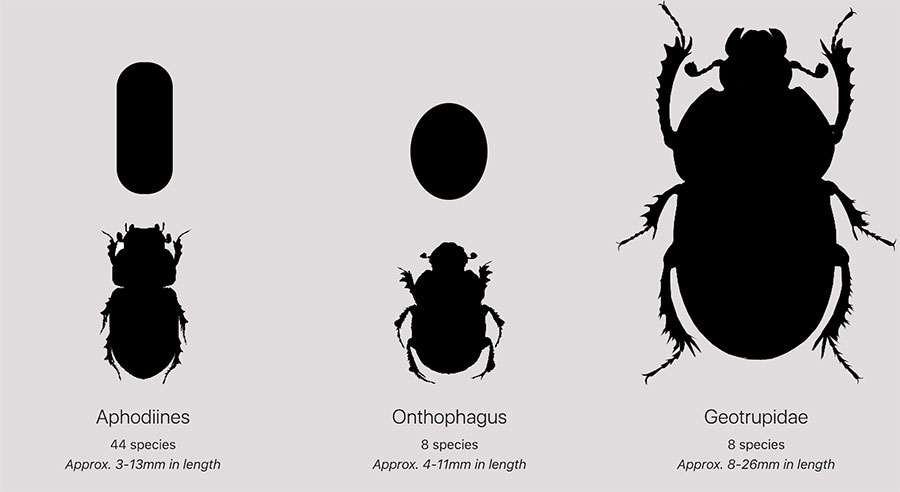How to attract dung beetles to your livestock farm
 © Juan Francisco/Adobe Stock
© Juan Francisco/Adobe Stock Dung beetle populations in the UK are in trouble, says farmer and entomologist Sally-Ann Spence.
These insects play a vital role in livestock systems with dung pat management, soil health and parasite control.
Cattle produce 6% of their bodyweight in dung every day, or 9t/year, and sheep produce 8% of their bodyweight in dung daily, or 800kg/year.
Dung beetles help break this down – but more than 50% of UK species are threatened to some degree, according to a report by Natural England (NECR224, 2016).
See also: How farms can reduce insecticides with natural pest control
Types of dung beetle

© James Allen
There are about 60 species of dung beetle in the UK, and they fall into three groups.
Aphodiines are “dwellers”, living in dung, while geotrupidae – the biggest of the three – and onthophagus are “tunnellers”, pulling balls of dung down into the soil.
They are all herbivores, can fly, and have clubbed antennae to maximise their ability to smell dung.
Threats to dung beetles
Dung beetles face many challenges:
- Climate change – especially sudden unseasonal warm spells, which can trigger dung beetle emergence in huge numbers when livestock may not yet be out at pasture, so there is no dung for them to feed on or breed in
- Removal of livestock from farms
- Change of land use, for example, to a golf course
- Soil disturbance – tines and harrows expose dung beetles to predation
- Chemical treatments – treating livestock for parasites kills dung beetles.
Sally-Ann Spence’s tips to encourage dung beetles
- If you have livestock, you are already helping dung beetles
- If you have a mix of livestock, that’s even better
- If they are out all year (even if just a few), that’s better still
- Treat your livestock for parasites selectively rather than routinely
See more on the Dung Beetles for Farmers information hub.
Benefits of dung beetles
While their primary function is drying out and removing dung pats, dung beetles provide many other services. They:
- Reduce the need for harrowing, saving costs
- Cut parasite and pest fly populations by disturbing eggs in the dung and breaking their life cycles
- Carry mites on their backs from pat to pat, and drop them off to hunt down fly maggots
- Reduce greenhouse gas emissions – dung not broken down by dung beetles remains on the ground, where it continues to ferment and produce methane
- Increase pasture fertility
- Increase soil organic matter
- Redistribute fungi and bacteria
- Improve soil aeration
- Improve water quality
- Improve rain infiltration
- Increase biodiversity above and below ground
- Are a vital food source.
“Think of dung as a habitat,” says Ms Spence. “A dung pat with tall ridges – not too wet, not too dry – is ideal.
“Dung beetles don’t like ‘splatters’ – they are not deep enough for the dung beetles to get away from predators, they can’t pull the dung into the ground, and they can drown.”
Encouraging dung beetles
To encourage dung beetle activity, Ms Spence advises adopting a sustainable management plan:
- Take faecal egg counts or blood tests to assess parasite burdens and only treat animals that need treating
- Cull animals susceptible to parasite burdens and selectively breed for natural resistance
- Develop a parasite control plan with your vet using treatments with lower toxicity
- Keep animals off clean pasture for at least a week after any treatment
- Be aware that long-acting products will also affect dung beetles for a longer period
- Avoid underdosing, as this can accelerate parasite resistance, and weigh animals accurately to determine dosage rate
- Rotate animal species around pastures – stock/pasture rotation can help break parasite cycles and reduce parasite resistance
- Include high-fibre grasses and natural anti-parasitic species like chicory, sainfoin, plantain and bird’s-foot trefoil in sward mixes.
Sally-Ann Spence was speaking at Groundswell, which took place on 22-23 June at Lannock Manor Farm, Hitchin, north Hertfordshire.
